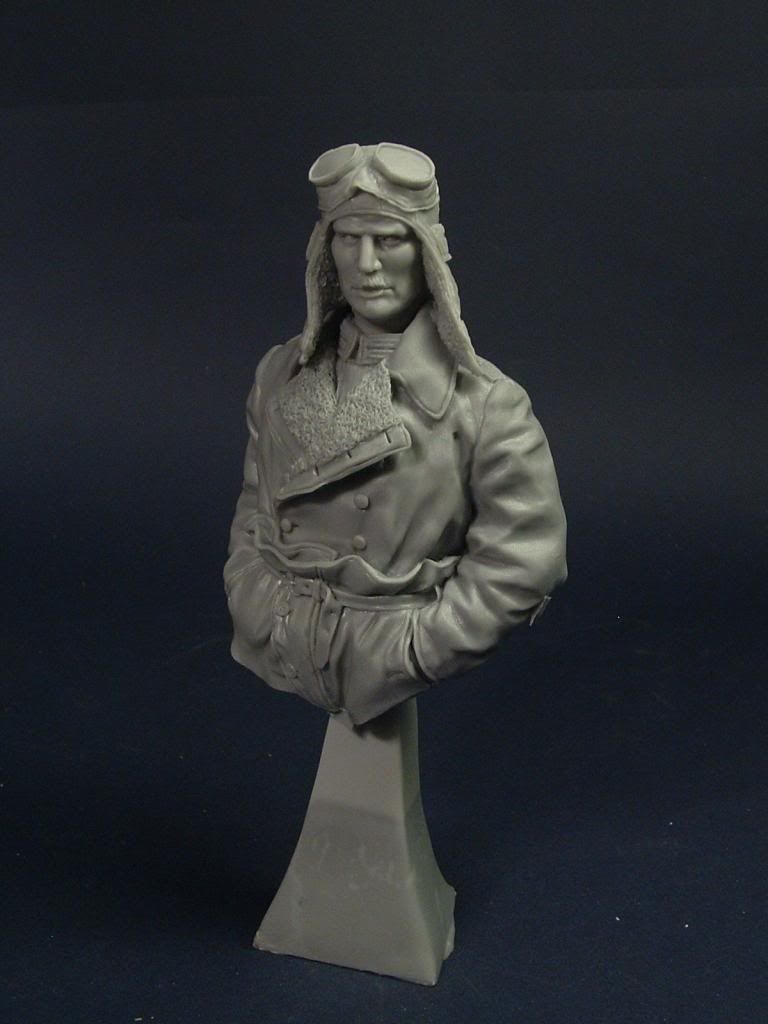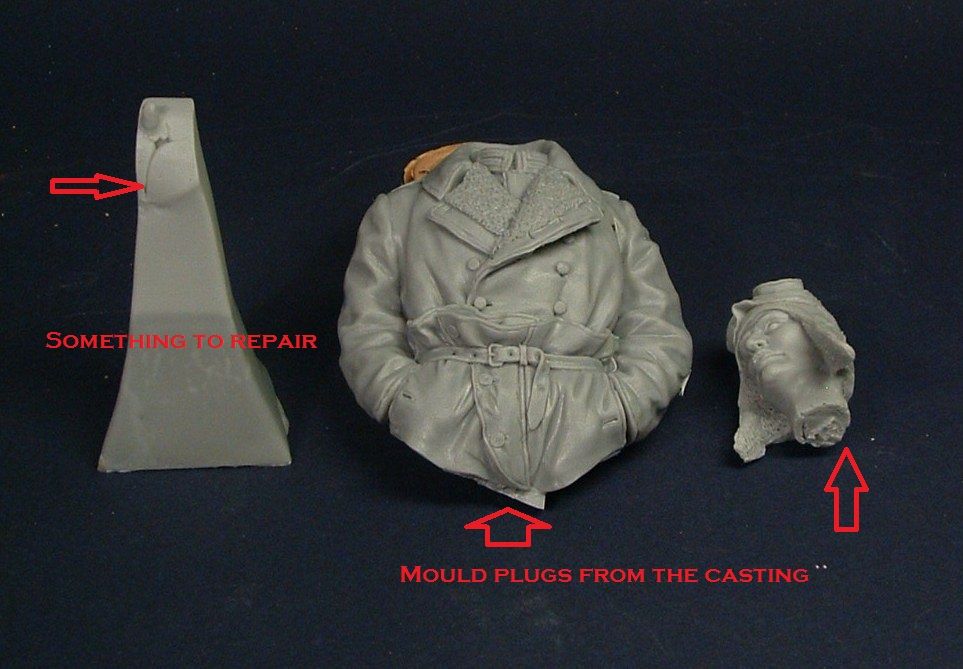Thanks for your response guys, this will be fun for me and a challenge for my English skills.
Have you chosen your figure yet? I have and my obvious choice is the bust from Stormtrooper “Josef Mai”. The reason for choosing this is simple, it´s the only figure I have in hand today and if I´ll have to order a new one (54mm) you have to wait and we don’t want that.

So preparing the figure for painting is the game now. There´s some stuff to know here, first I´ll often give my figure a good bath with soap and water to get rid of any kind off grease from the moulds. As you maybe know the figure is casted in silicon moulds and when the moulds get older they dry up and one way to get more money out of a mould is to give more oils to soften the silicon.
With fresh moulds you get fine mould lines around the figure and with older moulds you got heavier mold lines. So here´s the tip, remember get the figure when its new on the market if you want a good one almost every figures is short productions and as long the master and mould are workable copies off the master hits the market.
On my bust there is some resin inlets and some bubbles to fix before the first primer is top go on. This will be fixed with some emery paper, needle files, and a good hobby knife.

If you’re into a full figure you will need to drill a tiny hole in one off the feet and insert a short pin or paperclip. This pin or paperclip will give you to fix the figure on a pinvise or painting plinth. this is only for easy painting.
When the figure is painted and done this pin will secure the figure to the base.
Okay back to the bust again, when the bust is cleaned in soap and water give it the night to dry, then you can start the preparing it for primer. Any inlets or mould lines are/is removed gently work with your hobby knife and emery paper to get rid of the lines. If you trouble to find them give the figure a thin coat of primer and they will appear if they are there. As I mentioned before, a mix of grey and white Humbrol is a good colour to see and find these lines before you got the paints on the figure.
When all preparing is /are done give the figure a new thin coat of primer. This primer will hold the paint as a canvas for you to paint on.
The last tip for today is this
Say you have a figure where the painting skill is not up to your expectations. Here comes my best friend ordinary house hold pluming cleanser.

You can get this at your grocery store and with some hot water in plastic bowl add some cleanser to the water and mix it, you have a real good paint stripper here. Just be outside here or well ventilated areas and use rubber gloves from the pharmacy. In an hour get your figure back without the old paint, just restart the paint again. This works fine with humbrols and my guess is that you can find similar tricks for acrylics.
Enough for tonight folks, questions, critics and comments are welcome.
Best Regards
LarsaQ